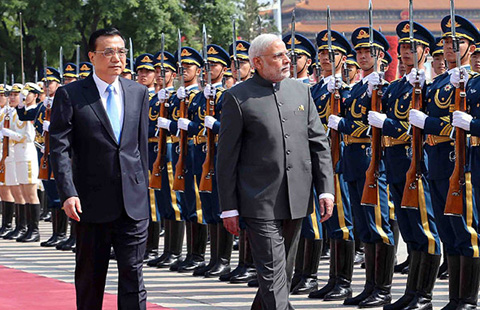
|
 |
|
ZHANG CHENGLIANG/CHINA DAILY |
Shanghai auto show is evidence of a new-found confidence in domestic automakers
This year's Shanghai auto show, the most eagerly awaited industry event in China, may have captured global headlines for the absence of the usual scantily clad models, but it was most notable for the step-wise increase in the competitiveness of the Chinese car brands on display.
Chinese car brands used to be stuck at the lower end of the domestic market, while foreign competitors dominated the more profitable top end. This year's show suggested that a major change is taking place and that the Chinese automotive industry is fighting back.
No longer do we see cheap knockoffs; instead at this year's show Chinese automakers proudly presented upmarket, high-tech models.
Dongfeng Motor Corp, whose headquarters are in Wuhan, Hubei province, unveiled an extremely impressive mass-production sedan. Also making its debut was the Guangzhou Auto Trumpchi GA8, which many argue ranks as one of the most attractive Chinese sedans ever built. Both models were little more than concepts less than a year ago. At the show, too, Chinese-owned Volvo displayed its flagship GC9 sedan.
Another distinguishing feature of the Shanghai show was the many environmentally friendly vehicles on display. A record 103 new-energy cars were present, as the domestic and foreign automotive sectors battle for the increasingly green-oriented Chinese consumer.
Of these 103 cars, almost half were Chinese brands, in part influenced by the central government's policies toward sustainable growth.
Among the 51 domestic new-energy models, often a combination of hybrids and plug-ins, it was perhaps BYD with its Song Yuan plug-in hybrid and Hawtai Motor's Lusheng E70EV that were most representative of the increasingly competitive Chinese auto sector.
The increased competitiveness is also due to changes in attitudes toward foreign car brands among Chinese consumers. Adoration of major foreign brands such as Audi and BMW is waning, as Chinese consumers become increasingly independent and rational in their decision-making.
It is not only foreign automakers that need to understand this inevitable trend and rethink their entire branding approach to Chinese consumers. A recent 20-percent price reduction by French luxury cosmetics brand Chanel also provides firm evidence that Chinese consumers are switching from well-known foreign brands. Chanel's image and associations can no longer command a premium price, as Chinese consumers continue to redefine how they construct "prestige" and exclusivity".
The need for information in order to make informed consumer choices is also evident in the numbers of people attending the Shanghai auto show. The number reached 800,00 two years ago, but this year's attendance could surpass the one million mark.
The theme of this year's show, Innovation for Upgrading, probably contributed to its popularity. But it is also a reflection of the changing brand-building business models adopted by many Chinese automakers.
Many auto industry commentators agree that Chinese brands now rightly justify higher prices due to far more sophisticated design and manufacturing. Crucially, this narrowing of the gap in quality with long-established foreign brands is most appreciated and accepted by Chinese consumers.








